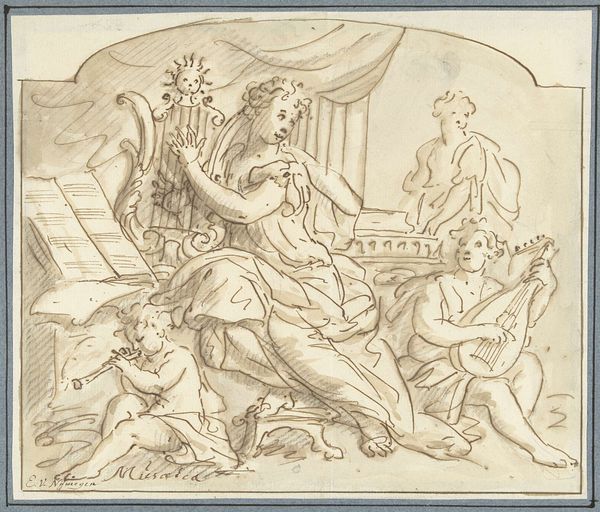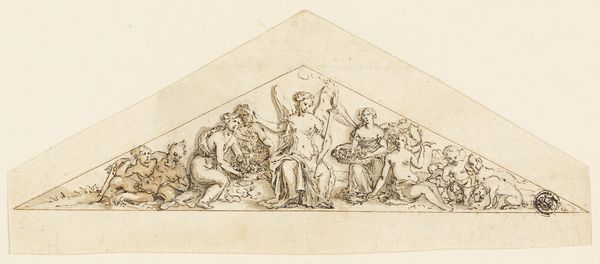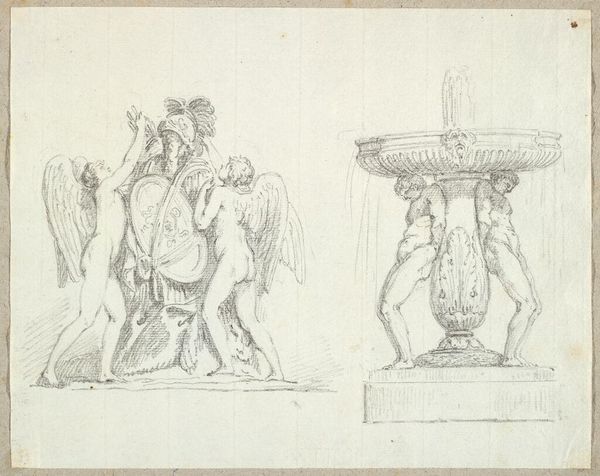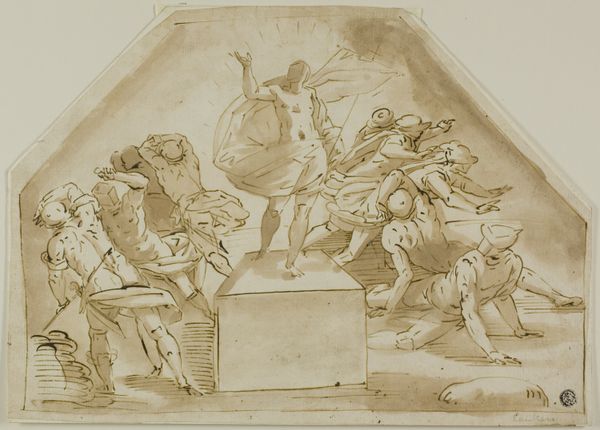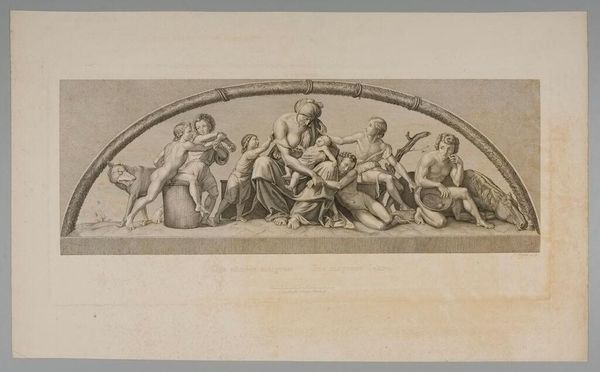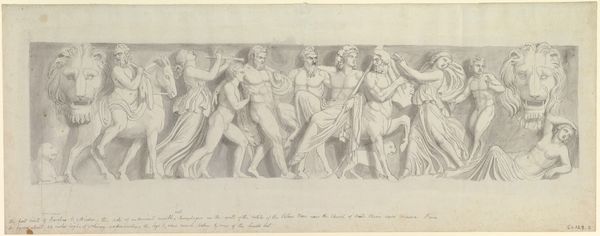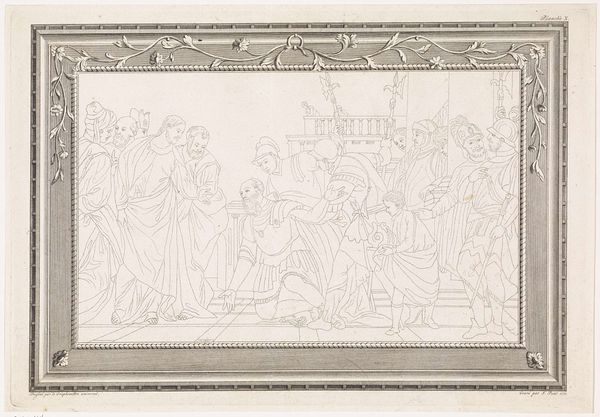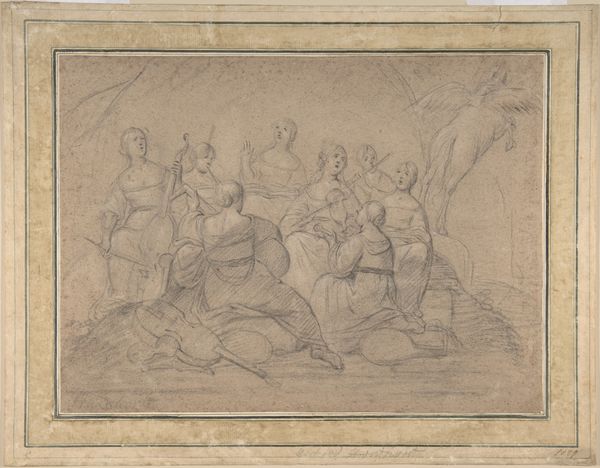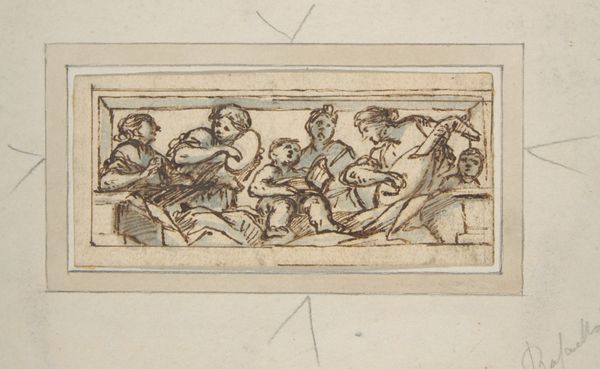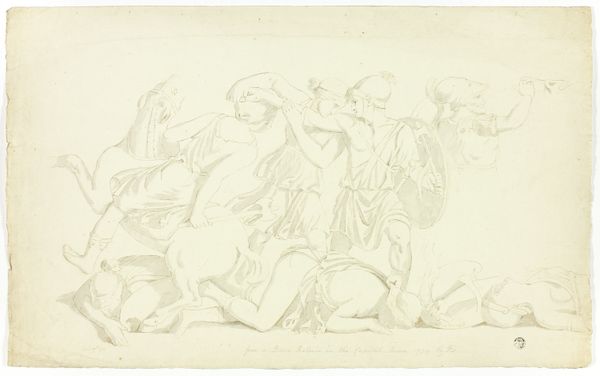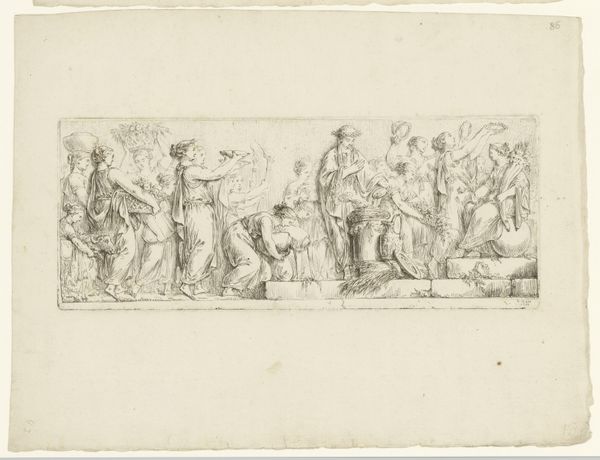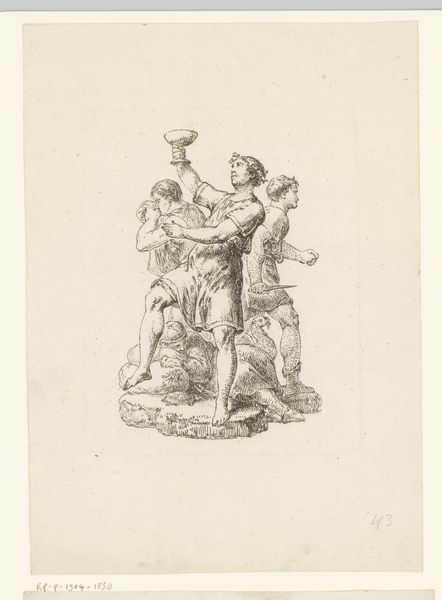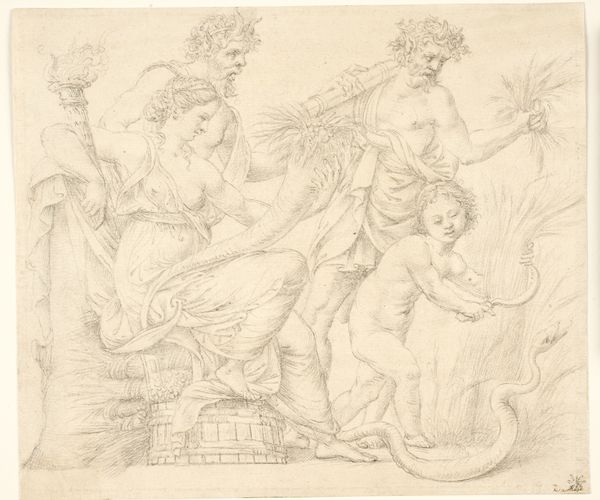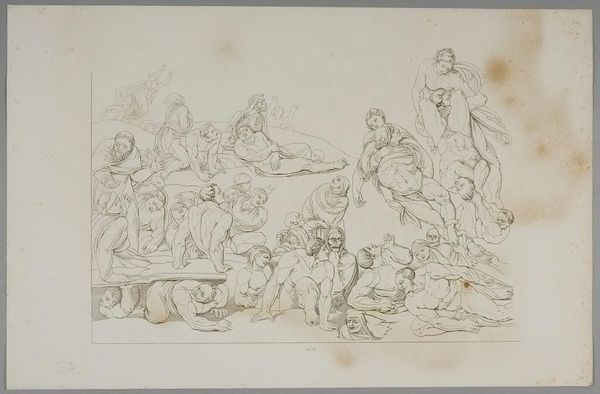
Udkast til en fronton, symboliserende velstanden. 1708 - 1762
0:00
0:00
Dimensions: 186 mm (height) x 538 mm (width) (bladmaal)
Johan Christoph Petzold created this drawing, “Udkast til en fronton, symboliserende velstanden,” which translates to “Draft for a pediment, symbolizing prosperity,” sometime in the 18th century. Petzold, born in Dresden, Germany, worked in a period defined by the Enlightenment’s emphasis on reason and order, as well as the continuation of rigid social hierarchies. This sketch, intended for architectural ornamentation, encapsulates the era’s complex relationship with prosperity. At its center, a figure—likely a female allegorical representation of abundance—sits amidst symbols of wealth and security. But for whom was this prosperity intended? Consider that while Enlightenment ideals spoke of equality, the reality for many, particularly those of lower social classes, women, and people of color, was starkly different. While Petzold's sketch celebrates prosperity, it's essential to question whose prosperity is being celebrated and who is excluded from this vision. The emotional impact of this work today lies in the dissonance between the idealized representation of wealth and the historical realities of inequality.
Comments
No comments
Be the first to comment and join the conversation on the ultimate creative platform.
